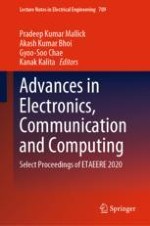This book comprises select proceedings of the international conference ETAEERE 2020, and covers latest research in the areas of electronics, communication and computing. The book includes different approaches and techniques for specific applications using particle swarm optimization, Otsu’s function and harmony search optimization algorithm, DNA-NAND gate, triple gate SOI MOSFET, micro-Raman and FTIR analysis, high-k dielectric gate oxide, spectrum sensing in cognitive radio, microstrip antenna, GPR with conducting surfaces, energy efficient packet routing, iBGP route reflectors, circularly polarized antenna, double fork shaped patch radiator, implementation of Doppler radar at 24 GHz, iris image classification using SVM, digital image forgery detection, secure communication, spoken dialog system, and DFT-DCT spreading strategies. Given the range of topics covered, this book can be useful for both students and researchers working in electronics and communication.
